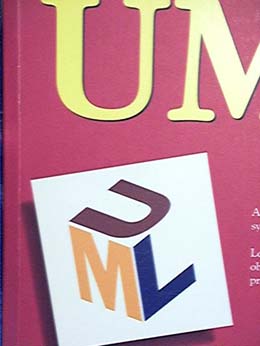
© 1997 by Editions, Eyrolles, Paris, France
All rights reserved. No part of this book may be reproduced, stored in a retrieval system or transmitted in any form or by any means, without the prior written permission of the publisher, except in the case of brief quotations embodied in critical articles or reviews.
The author and publisher have made every effort in the preparation of this book to ensure the accuracy of the information. However, the information contained in this book is sold without warranty either express or implied. Neither the author, Wrox Press nor its dealers or distributors will be held liable for any damages caused or alleged to be caused either directly or indirectly by this book.
Table of Contents
Introduction.................................................................................1
Who this Book is for...................................................................................1
What You Need to Use This Book................................................................3
Tell Us What You Think...............................................................................3
Chapter 1: The Genesis of UML.....................................................5
Analysis and Design Methods.....................................................................5
What is the Purpose of a Method?................................................................................5
From Functional to Object-Oriented Methods..................................................................6
The Proliferation of Object-Oriented Methods.................................................................8
Booch and OMT Getting Closer.....................................................................................8
Unification of Methods...............................................................................9
Towards a Unified Modeling Language...........................................................................9
Model and Metamodel................................................................................................11
Chapter 2: The Object-Oriented Approach.....................................15
Why the Object-Oriented Approach?...........................................................15
Objects...................................................................................................17
Fundamental Characteristics of an Object....................................................................19
State..................................................................................................................................19
Behavior.............................................................................................................................20
Identity................................................................................................................................21
Implementation Constraints........................................................................................21
Object Persistence...............................................................................................................21
Broadcasting Objects...........................................................................................................21
Proxy Objects ......................................................................................................................22
Object Intercommunication .........................................................................................22
Categories of Behavior.........................................................................................................22
The Concept of Messages...................................................................................................24
Message Categories............................................................................................................24
Message Synchronization Types .....................................................................................25
Simple Message Broadcast............................................................................................26
Synchronous Message Broadcast...................................................................................26
Rendez-vous Message Broadcast....................................................................................26
Timed Message Broadcast.............................................................................................27
Asynchronous Message Broadcast..................................................................................27
Representation of Interactions between Objects ..........................................................28
Collaboration Diagrams........................................................................................................28
Sequence Diagrams ............................................................................................................29
Classes...................................................................................................30
The Process of Abstraction.........................................................................................30
Graphical Representation of Classes...........................................................................31
Description of Classes...............................................................................................33
Relationships Between Classes................................................................36
Association................................................................................................................36
Aggregation ...............................................................................................................38
Parallels between Class and Object Diagrams..............................................................39
Class Hierarchies.....................................................................................40
Generalization and Specialization................................................................................40
From Sets to Classes.................................................................................................43
The Difficulty of Classification.....................................................................................47
Inheritance................................................................................................................50
General Principle.................................................................................................................51
Delegation ..........................................................................................................................53
The Substitution Principle....................................................................................................54
Polymorphism............................................................................................................55
General Principle.................................................................................................................55
Application..........................................................................................................................56
Taking Advantage of the Substitution Principle ......................................................................59
Triggering Operations...........................................................................................................60
The Influence of Typing........................................................................................................62
Summary................................................................................................63
Chapter 3: The UML Notation......................................................65
UML Diagrams.........................................................................................66
Basic Concepts........................................................................................67
Common Elements.....................................................................................................67
Common Mechanisms................................................................................................67
tiii
Stereotypes ........................................................................................................................68
Tagged Values.....................................................................................................................69
Notes..................................................................................................................................69
Constraints.........................................................................................................................69
Dependencies.....................................................................................................................69
Type/Instance and Type/Class Dichotomies.........................................................................69
Data Types................................................................................................................69
Packages...................................................................................................................70
Class Diagrams.......................................................................................73
Classes.....................................................................................................................73
Attributes and Operations....................................................................................................74
Visibility of Attributes and Operations...................................................................................75
Interfaces...........................................................................................................................76
Template Classes................................................................................................................76
Utility Classes.....................................................................................................................77
Associations..............................................................................................................77
Association Naming.............................................................................................................77
Role Naming........................................................................................................................78
Multiplicity of Associations...................................................................................................79
Constraints on Associations.................................................................................................80
Association classes.............................................................................................................81
N-ary Associations...............................................................................................................81
Location of Attributes According to Multiplicity Values.............................................................82
Association Qualifiers..........................................................................................................83
Aggregations..............................................................................................................84
Composition........................................................................................................................84
Navigation.................................................................................................................85
Navigation Expressions........................................................................................................85
Generalization............................................................................................................87
Abstract Classes........................................................................................................90
Introduction to the Metamodel....................................................................................90
Relationships......................................................................................................................92
Association....................................................................................................................92
Generalization................................................................................................................93
Dependency...................................................................................................................94
Use Case Diagrams.................................................................................95
The Use Case Model..................................................................................................95
Relationships Between Use Cases..............................................................................97
The Communicates Relationship..........................................................................................97
The Uses Relationship.........................................................................................................98
The Extends Relationship.....................................................................................................98
Object Diagrams......................................................................................98
Representation of Objects..........................................................................................99
Representation of Links..............................................................................................99
Composite Objects...................................................................................................100
Similarities with Class Diagrams...............................................................................101
Collaboration Diagrams..........................................................................102
Representation of Interactions..................................................................................102
The Place of the User.........................................................................................................103
Active Objects....................................................................................................................104
Representation of Messages.............................................................................................104
Synchronization............................................................................................................104
Sequence....................................................................................................................105
Result..........................................................................................................................106
Name ..........................................................................................................................106
Arguments...................................................................................................................106
Collaborations..........................................................................................................107
Interactions.......................................................................................................................107
Sequence Diagrams...............................................................................108
Representation of Interactions..................................................................................108
Control Structures....................................................................................................112
Statechart Diagrams..............................................................................114
State Machines........................................................................................................115
States.....................................................................................................................116
Transitions...............................................................................................................117
Events ..............................................................................................................................118
Guards....................................................................................................................119
Operations, Actions, and Activities............................................................................119
Execution Points of Operations.................................................................................121
Generalization of States...........................................................................................122
Aggregation of States...............................................................................................123
History....................................................................................................................124
Object Intercommunication .......................................................................................125
Object Creation and Destruction................................................................................126
Timed Transitions.....................................................................................................127
Metamodel Introduction.....................................................................................................128
Activity Diagrams...................................................................................129
Representation of Activities......................................................................................129
Component Diagrams.............................................................................133
Components............................................................................................................133
Dependencies Between Components........................................................................133
Subsystems......................................................................................................................134
Processes.........................................................................................................................134
Integration with Development Environments...............................................................135
Deployment Diagrams............................................................................136
Representation of Nodes..........................................................................................136
Summary..............................................................................................138
Chapter 4: Object-Oriented Project Support...............................141
Software Characterization.......................................................................141
The Software Crisis..................................................................................................141
Software Categories.................................................................................................142
Software Complexity.................................................................................................142
Origins of Software Complexity...........................................................................................143
Consequences of Complexity.............................................................................................144
The Scope of the Object-Oriented Approach...............................................................144
Object-Oriented Analysis.....................................................................................................145
Object-Oriented Design ......................................................................................................147
Object-Oriented Programming.............................................................................................149
The Transition to Object-Oriented Technology..............................................................151
Towards a Development Method.............................................................152
Use Cases...............................................................................................................153
Benefits of Use Cases.......................................................................................................154
Construction of Use Cases................................................................................................155
Rules for Setting up Use Cases..........................................................................................155
Elaboration Process for Use Cases.....................................................................................156
Last Pitfalls to Avoid..........................................................................................................158
The Transition to Object-Oriented Technology.......................................................................158
Software Architecture...............................................................................................160
The Architect's Vision ........................................................................................................161
The Logical View...........................................................................................................162
The Implementation View..............................................................................................162
The Process View.........................................................................................................162
The Deployment View...................................................................................................162
The Use Case View.......................................................................................................163
Organization of Models......................................................................................................163
Documentation of Architecture......................................................................................164
Articulation of the Different Diagrams.................................................................................164
Expression of Requirements.........................................................................................165
Transition to Object-Orientation.....................................................................................165
Expressing Behavior.....................................................................................................165
Representing the Structure...........................................................................................166
Implementing Objects and Classes...............................................................................166
Deployment of executable code..........................................................................................167
Organization of Models and Views.................................................................................168
Granularity of Model Elements............................................................................................168
Summary of Elements and Views .......................................................................................170
Patterns............................................................................................................................171
Description of Patterns.................................................................................................172
Idioms.........................................................................................................................172
Frameworks.......................................................................................................................172
The Role of Software, or the Cultural Clash.........................................................................174
Iterative and Incremental Lifecycle ............................................................................176
Linear Lifecycle..................................................................................................................176
vi
Цена: 150руб.